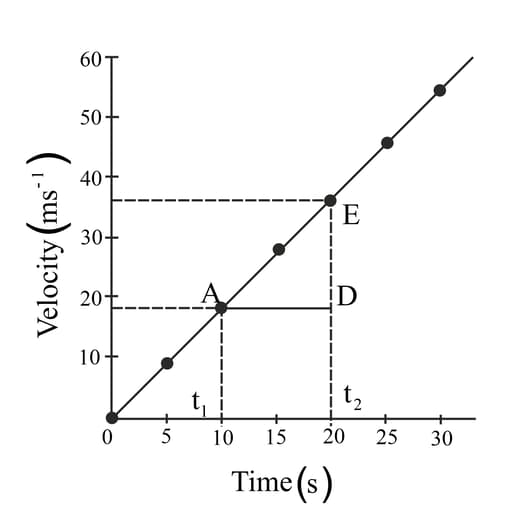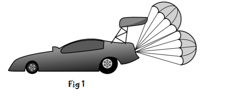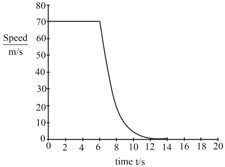Acceleration
Acceleration: Overview
This topic covers concepts such as Acceleration Due to Change in Velocity, SI Unit of Acceleration, Acceleration and Non-uniform Acceleration etc.
Important Questions on Acceleration
If a body is moving in a circular path with uniform circular motion. Then it's acceleration will be uniform or non-uniform?
What are all types of acceleration and explain them
What is Non-uniform Acceleration? Give an example.
What is Uniform Acceleration? Give an example.
What is the ratio of CGS to SI unit of acceleration?

In the above graph what is the value of acceleration?
A car accelerates from a velocity of to a velocity of in . The magnitude of acceleration of the car would be:
The speedometer readings of a car are shown below. Find the acceleration of the car and its displacement.
| Time | Speedometer |
| 9:25 am | 36 km/h |
| 9:45 am |
72 km/h |
Parachutes are used to slow down a certain racing car.
Figure 1 shows the racing car, of total mass , slowing down by using parachutes.

Figure 2 is the speed-time graph after the car reaches full speed.

At the time, the parachutes open.
(a) In Fig 1
(i) mark a point, labelled A, where the car is moving at a constant speed.
(ii) mark a point, labelled B, where the car is decelerating at a uniform rate.
(iii) mark a point, labelled C, where the car is decelerating at a non-uniform rate.
(b) Calculate
(i) the deceleration of the car at the time
(ii) the resultant force acting on the car at this time.
(c) Explain why there is no resultant force acting on the car at the time
When a ball is thrown in vertically upward direction then which of the following remains constant.?
A body describes uniformly accelerated motion along a straight line. Which of the following displacement-time graphs shown represent the motion correctly?
At what interval does the object with the acceleration-time graph as shown in the figure make uniform linear motion?

A person sitting in a train moving with a constant velocity along a straight line throws a ball vertically upwards, then the ball will
When acceleration is constant when
equals
A cyclist rolls down a hill. He starts from rest and after he is travelling at . Then his acceleration will be . Find the value of .
A train has a driving force of and a mass of . Then its acceleration will be . Find the value of .
For a body in non-uniform acceleration that velocity does not remain constant.
What do you mean by non-uniform acceleration?
